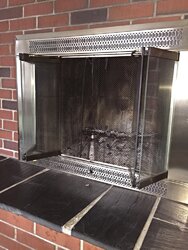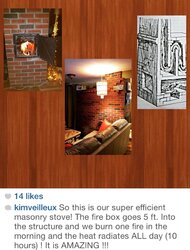Ladies and gentlemen,

Fireplace measurements:
37''(w)
25''(h)
26''(d)
At 18''(d) 21''(rw)
Recently got with a local installer regarding our open fireplace on the first floor of our home. Asked them to come by and give us a quote, and what they thought of the setup.
Quote:

He said due to the size we'd be limited to either a wood or pellet insert.
Finally, my wife sent me this:

Never heard of one before, but the principal makes sense. Wouldn't mind some insight into conductive wood heating as I start digging into the research, specifically cost and inserting one into our current chimney. I will say that our chimney is a 'double' with the basement having its own separate chimney directly behind that currently isn't being used due to a very old wood stove.

Fireplace measurements:
37''(w)
25''(h)
26''(d)
At 18''(d) 21''(rw)
Recently got with a local installer regarding our open fireplace on the first floor of our home. Asked them to come by and give us a quote, and what they thought of the setup.
Quote:

He said due to the size we'd be limited to either a wood or pellet insert.
Finally, my wife sent me this:

Never heard of one before, but the principal makes sense. Wouldn't mind some insight into conductive wood heating as I start digging into the research, specifically cost and inserting one into our current chimney. I will say that our chimney is a 'double' with the basement having its own separate chimney directly behind that currently isn't being used due to a very old wood stove.
Last edited by a moderator:

